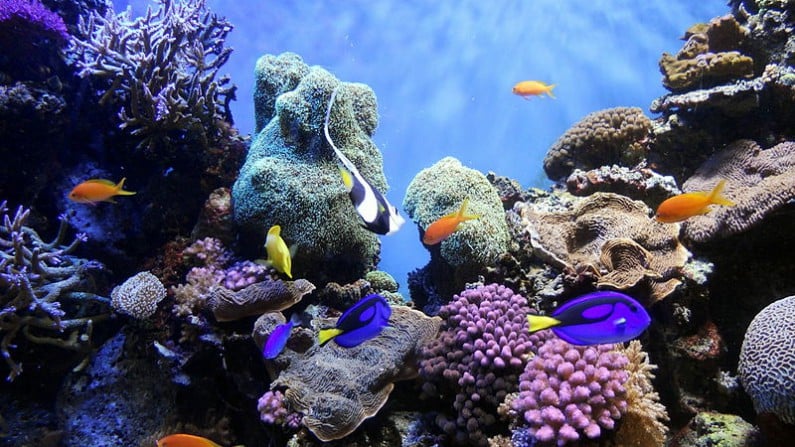New reef ridge discovered in Colombo – By Arundathie Abeysinghe

Image Source : asianews
Research and new mapping conducted by Blue Resources Trust and funded by Lanka Environment Fund have revealed that Yakampita and Gingiripita patch reefs, located a few kilometers off the coast of Colombo, are connected by a reef ridge. The new reef ridge was discovered during an Urban Reef Biodiversity Mapping Project in Colombo, while surveying five offshore reefs off Colombo. According to researchers, this is “the first comprehensive picture of the city’s offshore reef ecosystem.”
Senior Researcher at the Blue Resources Trust Chanaka Sooriyabandara revealed at a media briefing that “we used a drop camera and an echo sounder for ground truthing and discovered the connection, Gingiripita reef system was actually around 130 hectares, making it much larger than it was previously documented.”
“Meanwhile, these deeper habitats may serve as refugia for corals and reef fish, acting as larval sources as shallow reefs continue to decline due to thermal stress. By contrast, the nearshore sandstone reef Palagala recorded the lowest hard coral cover (2.3%) and the poorest water quality, driven by land-based pollution, including high turbidity and untreated sewage discharge, leading to eutrophic and hypoxic conditions.”
“Ecologically, the combined reef exhibits significant characteristics, especially in its northeastern section (Yakampita), which was previously unrepresented in earlier surveys. This section is notably similar to Gingiripita in structure and conditions and comprises areas where hard coral cover exceeds 50%, dominated by extensive stands of small polyp stony corals (Acropora aculeus) and disc corals (Turbinaria mesenterina). Due to this finding, the research team decided to consider both sites as one entity, and subsequently clumped together the substrate and fish data from Gingiripita and Yakampita for analysis.”
According to Marine Scientists these offshore reefs are significant as they play a crucial role in coastal protection because they act as the first line of defence against tsunamis and storms. Dissimilar to familiar coral reefs in the East or South, these reef systems are mainly flat, with only subtle rises which create as a limited vertical profile. Although, structurally simple, the hard reef surface supports striking coral growth. On that hard surface, there are coral formations which look almost like a field of flowers.”
“The maritime area of the island nation is more than three times larger, with 230,000 square kilometers within the Exclusive Economic Zone (EEZ), surrounded by a continental shelf covering 31,000 square kilometers and ranges from 9 to 45 kilometers with an average depth of 66 meters. Within the past two to three decades, reef use has increased tremendously, resulting in severe reef degradation.”
Reef ecologists Ravihari Wickramasinghe and Oshantha Rajapaksha are of the view that “the new dataset finally brings long-overdue attention to Colombo’s offshore reefs. As this is the first comprehensive study of Colombo’s offshore reefs, the dataset gives these ecosystems a level of visibility they have never had. Colombo’s reefs indicate that nature persists within human spaces and the findings also challenge long-standing assumptions in Sri Lanka’s conservation sector. Conservation frameworks must evolve to protect ecosystems embedded in lived, urban environments, not only those within formally protected areas.”
“Both sandstone and offshore reefs are affected by overfishing, while offshore sites also face anchor damage from increasing commercial ship traffic into Colombo Harbor. These deep-reef systems remain outside existing Marine Protected Area (MPA) boundaries and are largely absent from current resource management and development planning. Some fishermen still utilize polawe dela (cast net) with heavy rocks which causes severe damage. Although, dynamite fishing is not common near Colombo due to harbor radar, anchors remain a major threat, and nets often get caught in the shallow reef systems.”





















